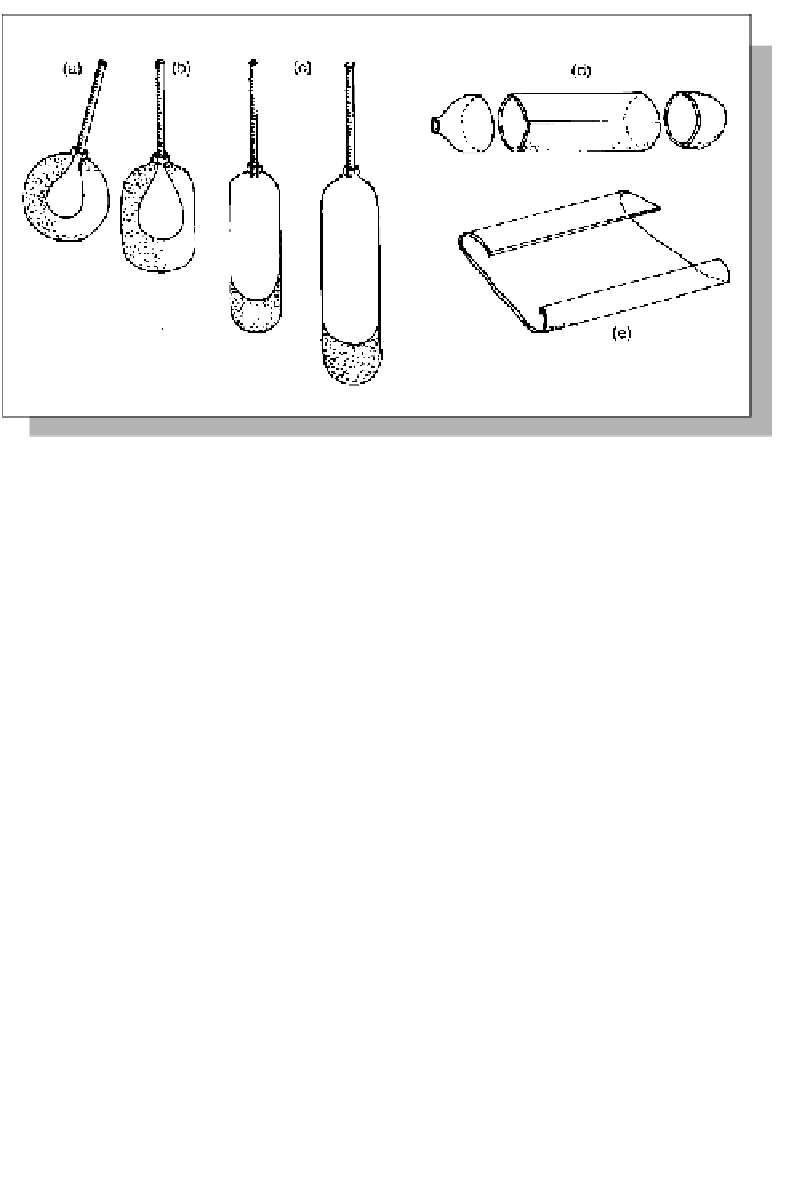Civil Engineering Reference
In-Depth Information
Figure 6.6: The production of table glass: (a)-(c) the glass is blown within a mould into a
cylinder; (d) the end pieces are cut off; (e) the cylinder is opened up and divided into the
required sizes.
Casting
Casting, most likely the first method for glass plate production, works on the
simple principle that the smelted glass mass is poured into smooth moulds and
then rolled out. This technique is still used for some types of glass where translu-
cency is less important, e.g. decorative glass, profiled glass and wired glass.
Glass bricks are made from two cast half blocks stuck together.
Crown glass
Crown glass was the most usual method up to about 1840. Figure 6.5 shows the pro-
duction process. The glass is blown up to a bubble, a pin is stuck to the sphere, and
the blowpipe removed. The pin is spun while the glass is warmed and the glass
bubble opens up, becoming a circular disc up to 1 m in diameter, which can then be
cut into panes. The pane in the middle - the bottle glass - is the lowest grade. Crown
glass has low optical quality, with bubbles, stripes and uneven thickness. Today it
is only used as decoration, or in panes where translucency is not required.
Table glass
Figure 6.6 shows the production process for table glass. The glass mass is blown
into an evenly thick cylinder in a mould 2-2.5 m long and 60 cm in diameter cast
in the floor. After blowing, the end pieces are removed and the cylinder is opened
along the middle. The glass is then warmed and stretched into a large flat sheet.
Table glass has a much better optical quality than crown glass. With this method,
larger panes of glass can be produced.

